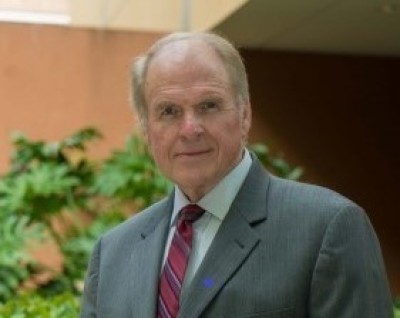Building the post-pandemic church: Out of ashes (part 1)
On April 15, 2019, Paris’ Notre Dame Cathedral burned. The structures that had been a familiar landmark for centuries were reduced to ashes. Thankfully, the great nave of the Cathedral was spared, though damaged.
Important official voices immediately declared that the Church would be rebuilt. Architects, church and government authorities, and others began speculating on what the future edifice would look like.

There is a parable here for the church in our times. COVID-19 has swept through many churches, burning up old strategies, styles, and institutional structures. The questions are on the lips of many leaders and their congregations: What will the post-pandemic church look like? What will arise from the ashes?
Those concerns take me back thirty-four years. In the summer of 1986, I was in my eighth year as pastor of a large church in Birmingham, Alabama. One afternoon my administrative assistant buzzed me on the intercom. “You have two long distance calls that have come in at almost the same moment,” she said.
“I’ll take line one and you tell line two to hold,” I replied. I punched the line-one button. The caller identified himself as the chairman of a pastor search committee for a church in Georgia. His committee wanted to interview me about considering a call to be their pastor. The congregation, he said, consisted of 4,400 people. The church services were telecast on several cable systems, and the future plan was to build a 5,000-seat auditorium.
The church I was serving in Birmingham had almost 2,000, so becoming pastor of the larger Georgia church seemed a logical career move. We chatted about scheduling a meeting. I hung up with a sense of excitement, and punched line two.
“I’m on a pulpit committee in Houston, Texas, and you probably won’t want to come here,” the man said. Houston’s energy-based economy was in a periodic slump, and unemployment was at critical levels. It was difficult to sell or buy property. Besides, there was the grueling Houston weather and traffic.
The church that was interested in me being pastor had had a flash of glory in the 1970s but had been reduced to metaphorical ashes. About 100 people remained and met weekly in a moldy gymnasium sitting on a meager two acres of land.
Ultimately, the Georgia church voted to call me as pastor, as did the Houston congregation. I couldn’t believe my own voice when I told the Georgia pulpit committee that I was accepting the Houston call.
A major reason stemmed from a 1973 experience I had. After almost three years on the White House staff I had moved back to Birmingham to resume my journalism career at The Birmingham News, at that time, Alabama’s largest daily newspaper. However, a few months after returning, the Lord renewed within me a call to be a pastor. I had first heard that call when I was fifteen, but midst the turbulence of the 1960s I had turned away. After the White House years, and more time spent covering the civil rights crisis in the Deep South, I had become convinced of the importance of the church, and responded positively to the Lord’s calling.
In late 1973 I became pastor of a small church in south Alabama. Though I had been to college and seminary, I had little practical knowledge as to what I should do to lead the church in growth.
Church growth theories and movements were abounding in the 1970s. So, I bought books, tapes, and “how to” guides, and studied them intensely. However, I didn’t know which strategy to choose.
One day, sitting amid a stack of church growth materials, a realization struck me like lightning: Jesus never had to work to “grow” a crowd... He always had a flock, sometimes so large He had to teach from a small boat just offshore to keep from being shoved into the water!
That prompted a question that would change my life and ministry: What did Jesus do that reached so many people?
In 1986, the Houston pulpit committee told me that I could lead the church any way I desired. I told them we would build the “Jesus Church,” though I did not fully understand what that was. I put aside church growth books and began to study the Gospels to see what Jesus did in His incarnate ministry.
The conviction built within me: If the New Testament Church is the body of Christ, then it ought to do what Jesus did in His body.
As I probed more deeply, I discovered these specific actions characterized His earthly ministry:
- Jesus worshipped
- Jesus interceded
- Jesus proclaimed the gospel of the Kingdom
- Jesus discipled those He reached
- Jesus served human need in the name of the Father
As John put it in the closing words of his Gospel, “there are also many other things which Jesus did, which if they were written in detail, I suppose that even the world itself would not contain the books that would be written.” (John 21:25)
Nevertheless, the major five ministry actions listed above became the strategic plan for the church in Houston. Ultimately, attendance grew to a thousand and more on weekends, with vibrant ministries throughout the week.
So, as the fire at Notre Dame prompted the need for renewal of its structure, COVID’s searing effects on contemporary churches has also sparked a need for rebuilding, renewing, and restoring.
The good news is, this moment is a kairos, an “opportune time” to build The Jesus Church as the post-pandemic church. The next installments in this series will provide details.
Wallace Henley is a former pastor, White House and congressional aide, and author of more than 25 books. His newest is Two Men From Babylon: Nebuchadnezzar, Trump, and the Lord of History, published by Thomas Nelson.





























